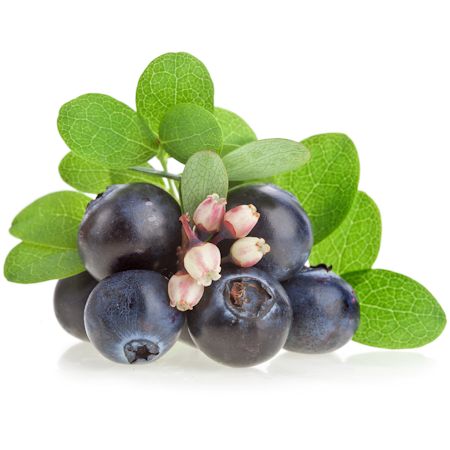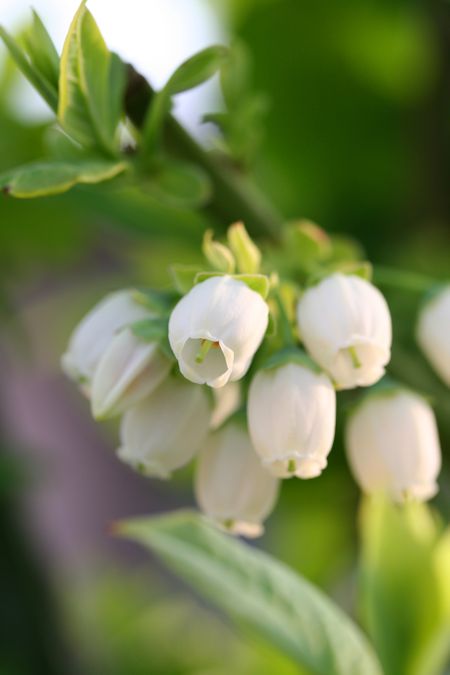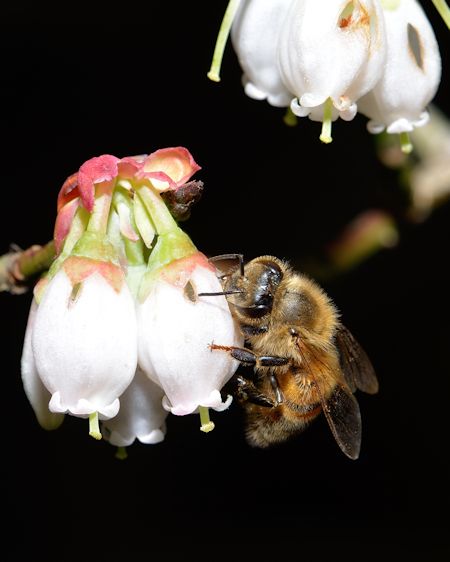Tasty Blueberry Honey,
A Vote for Your Health...
A higher level of antibacterial activity has been found in blueberry honey, buckwheat honey, and manuka honey... than other honey varieties in general.
Even so... all honey varieties include natural goodness like enzymes, vitamins, and minerals that makes them an important part of a regular diet. I would say that of these three just listed... manuka honey has the most research and fans to back its antibacterial power.
Honey bees gather nectar from the small white blueberry blossoms to make this sweet and healthy treat. Blueberry’s themselves are known to have high concentrations of anti-oxidants so it makes sense that honey made from the blueberry blossom would inherit properties that make it good at fighting bacteria.
These higher concentrations of anti-oxidants and antibacterial properties have made this honey the honey of choice for numerous health related uses over the years. It has been used for...
- a dressing in open wounds
- a topical skin care treatment
- a treatment for common colds and sore throats
- part of a healthy diet to fight cancer and heart disease
While some degree of higher antibacterial activity in this honey can be and has been proven through research…not every use over the years has documented medical evidence to the miracle kind of cures it has been noted for.
Making this honey or any honey a regular part of your diet as an overall life style plan that includes good exercise and a nutritious natural diet all around is a good idea. You will be more satisfied with the results of healthy living in general than if you rely on blueberry honey or any other single product to fix all your problems.

WHIZZ NOTE: Include blueberry honey in your diet for a healthy lifestyle plan. You will be glad you did!
Flavor... is full and well-rounded with a hint of blueberry at the finish.
Color... is light amber to amber and clear.
Storage... is average among honeys.
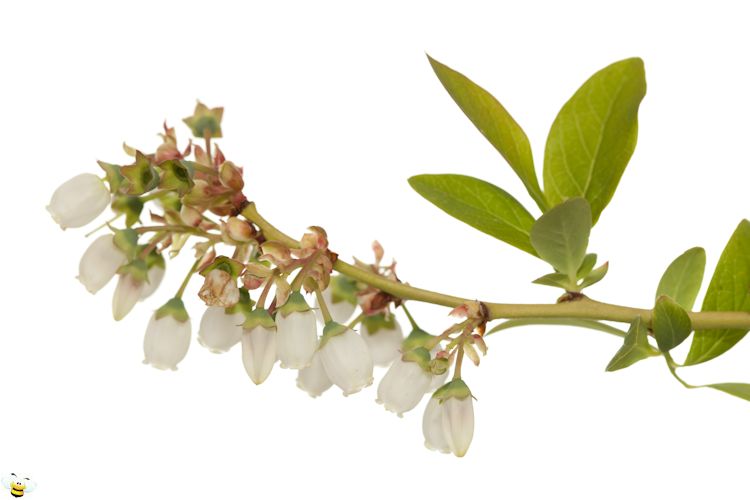
Plant:
Blueberries are a perennial, bush type flowering plant. Some varieties are small in size starting at just six inches tall, these are considered lowbush or wild. Other varieties are larger ranging in size up to around thirteen feet tall, these are considered highbush varieties and are typically used in commercial blueberry patches. Leaves are oval in shape and can be either deciduous or evergreen.
Bloom:
You will typically find the blueberry plant in bloom sometime in June. Flowers are found in clustering bunches and have a unique bell shape. Color will vary based on variety from mostly white to pale pink. Some varieties will have greenish tinges.
Location:
It seems there is a variety of blueberry bush for any location. Highbush can be found in Canada and all across the US with the southern highbush popular in California. Michigan is the leader in highbush blueberry production and Maine is the leader in lowbush or wild blueberry production.
Worldwide market supply can be found in the USA, Europe, Asia, and numerous Southern Hemisphere countries.
It probably will not be difficult to locate a source for blueberries or blueberry honey not far from where you live!
Honey and Pollen Potential:
Honey production is fare with the potential for 50lbs per hive.
The blueberry bush probably has more to gain in its relationship with the honey bee than the bee gains in honey. This is because many varieties are either cross-sterile or self-sterile so therefore they need the honey bees help for best possible pollination.
Studies have indicated that for every hive placed per acre a farmer may realize additional production to the tune of 1,000 lbs of berries! Blueberry farmers will pay for pollination services and place as many as five hives per acre of berries.
Blueberries are poor pollen producers. The pollen the honey bees do manage to collect will be orange to red yellow in color.
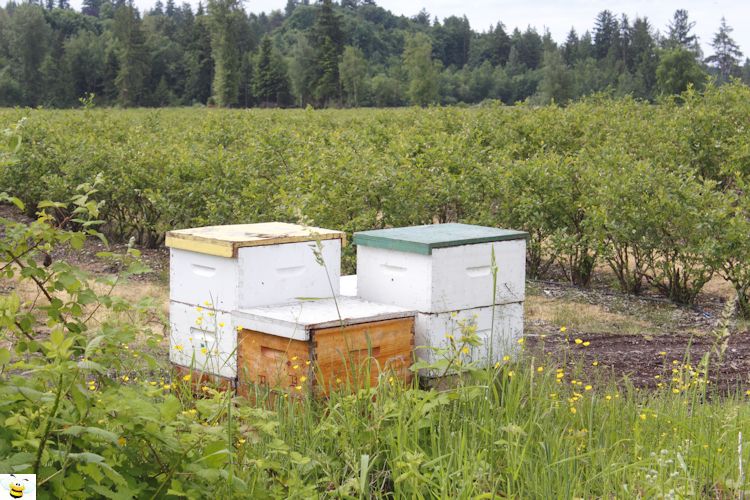
Blueberry honey will be sure to please with its mild yet distinct flavor and the many potential health benefits. Something healthy for you never tasted this good. I hope you have the opportunity to try some blueberry honey soon!
Honey › Good Honey Plants › Blueberry Honey
